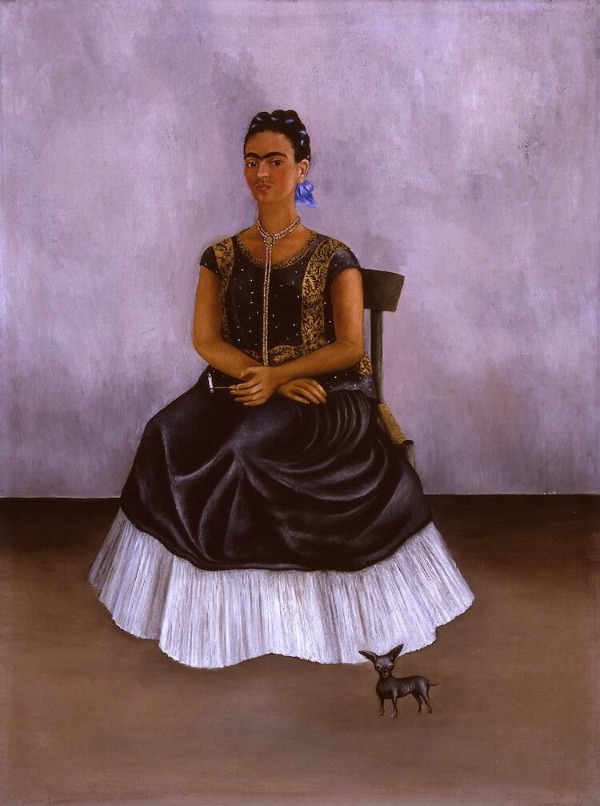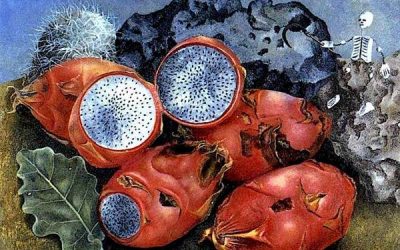
Itzcuintli Dog with Me by Frida Kahlo
In one of her numerous self-portraits, Frida Kahlo is seated in a chair, looking straight ahead and holding a cigarette in her left hand. She looks relaxed, calm, but with a defiant attitude, as if she knew that very soon we will turn our eyes to her feet, where is the true unusual detail of the painting, as if she dared us to say what we really think of the animal that she has included in the work, as black as the dress she wears. Frida’s gaze seems to echo the gaze that a small xoloitzcuintle returns to us in the lower right corner of the composition.
Frida Kahlo Self Portrait with dog
The particular fascination that the painter felt for the so-called Mexican hairless dogs was not unique. Frida Kahlo’s male and female dog couple, Güera Chabela and Señor Xólotl respectively, were photographed on numerous occasions by the famous Mexican photographer Lola Álvarez Bravo, who seemed to be as attracted to these animals as her friends Frida and her partner were, Diego Rivera. Several other artists and personalities of the time adopted and protected these very unusual dogs, which in many cases seemed to be an attempt to find and rescue Mexican symbols with a deep past. The xoloitzcuintles dogs were known in colonial records, which suggested that this breed had originated in pre-Hispanic America. Over the years, the xoloitzcuintle acquired a true status as a Mexican icon. Today, the Xoloitzcuintles soccer club from Tijuana plays in the first division and in the blockbuster movie Coco, the protagonist is accompanied by a hairless dog whose tongue constantly sticks out.
Frida Kahlo dog painting
However, by the time Frida painted “Itzcuintli Dog with Me” in 1938, the Mexican hairless dogs had only been recognized as a genuine breed of dog by the American Kennel Club, a historic American association for the registration of dog pedigrees, for a few years. Little was known about the biological traits of the xoloitzcuintles and that ignorance led to a real extermination. For decades, breeders and owners sacrificed about a third of the xolos puppies that, in every litter, and to the surprise and annoyance of breeders, were born with hair. Today, with the knowledge of the genetics of these animals, we can explain that biological regularity that contradicts the idea of pure breeds and, more importantly, has made it possible to stop the extermination.



